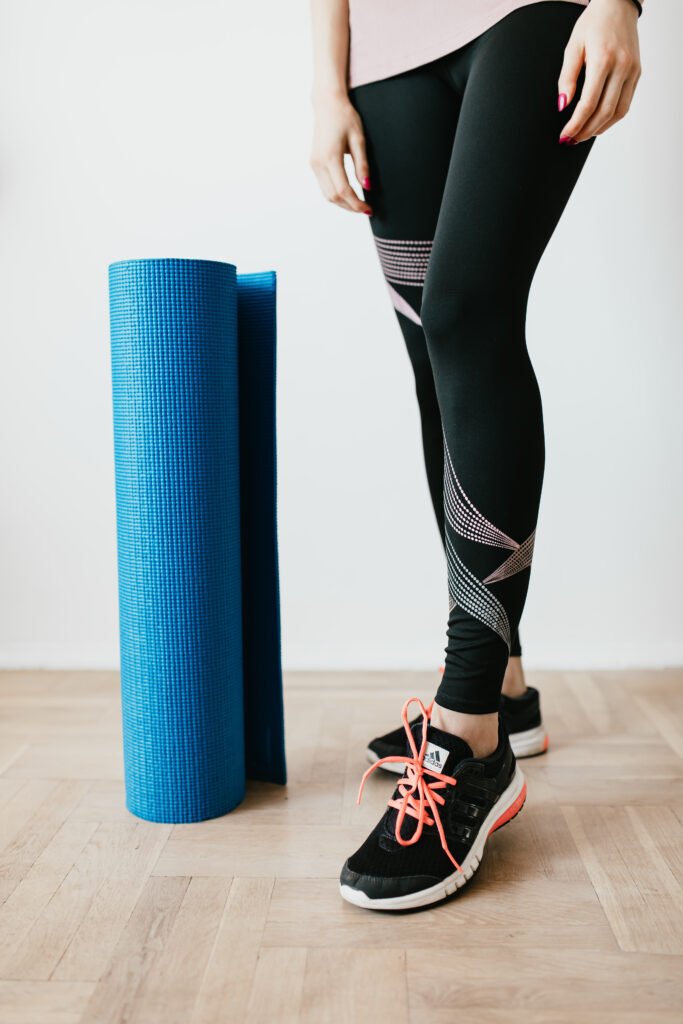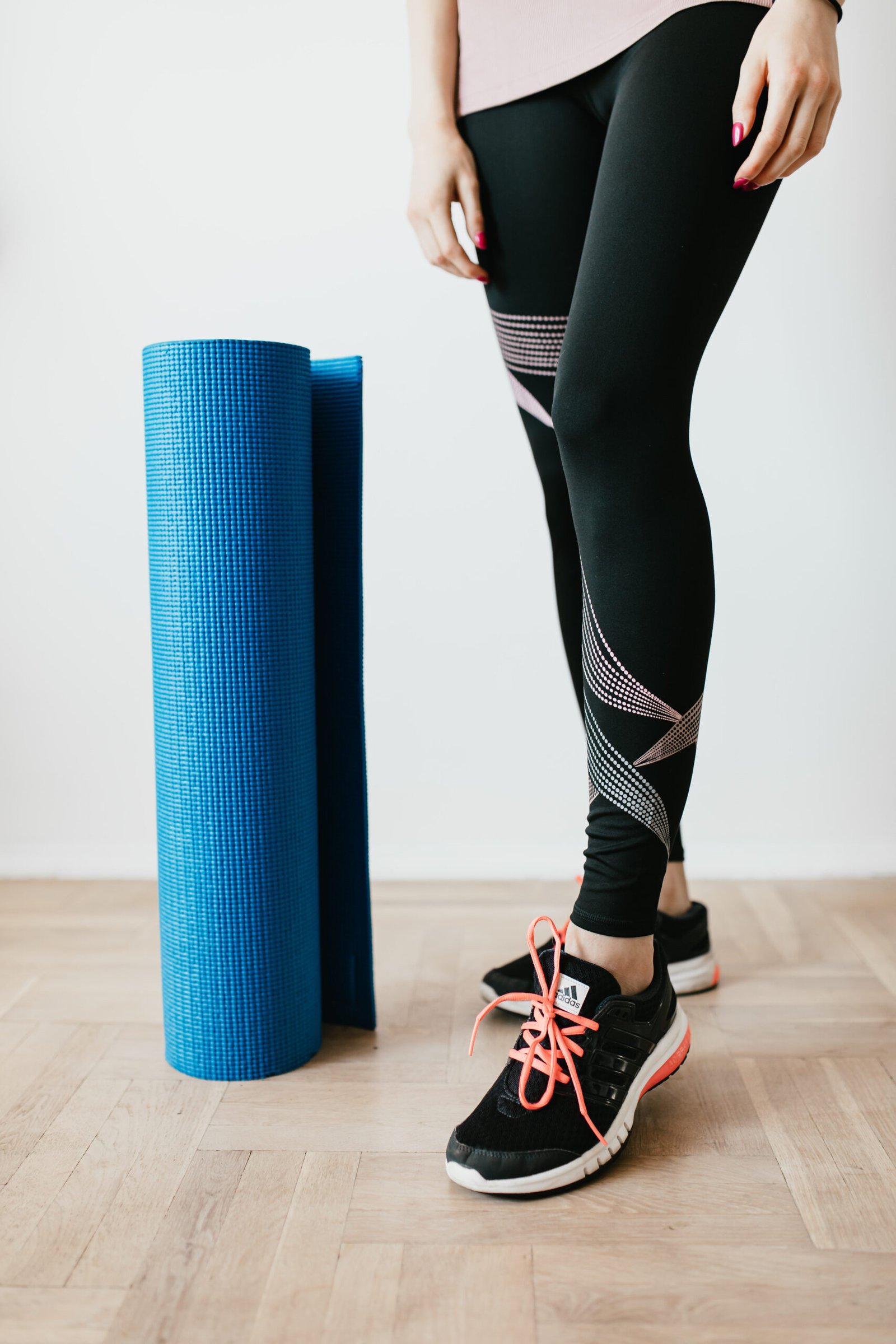If you’re looking to enhance your lower body strength and endurance, stair climbers are an excellent choice. These pieces of cardio equipment provide a challenging workout that targets major muscle groups, notably the glutes, quadriceps, and calves. Not only do stair climbers offer the opportunity for a powerful lower body workout, but they also provide a low-impact alternative to traditional forms of cardio exercise. In this article, we will explore the benefits of stair climbers and discuss how they can help you achieve your fitness goals.

What are Stair Climbers?
Stair climbers are fitness machines specifically designed to simulate the action of climbing stairs. They provide a challenging cardiovascular workout while also targeting the muscles of the lower body, making them an excellent choice for individuals looking to strengthen their legs and improve their overall endurance.
Definition
A stair climber, also known as a step machine or stair stepper, is a piece of stationary exercise equipment that mimics the motion of climbing stairs. It typically consists of two foot pedals that move up and down in a smooth, controlled motion, allowing you to engage your leg muscles and elevate your heart rate.
Types of Stair Climbers
There are several types of stair climbers available on the market, each offering unique features and benefits. The most common types include:
- Traditional Stair Climbers: These machines resemble a flight of stairs, with the user stepping up and down on the individual pedals.
- Stepmills: Stepmills feature a continuous revolving staircase, allowing for a more dynamic and realistic climbing experience.
- Mini Stair Steppers: Compact and portable, mini stair steppers have a smaller footprint and are ideal for individuals with limited space or those who prefer a more lightweight option.
Benefits of Stair Climbers
Stair climbers offer a wide range of benefits that can greatly enhance your fitness level and overall well-being. Incorporating regular stair climber workouts into your routine can help you achieve the following:
Increases Lower Body Strength
One of the primary benefits of using a stair climber is its ability to strengthen the muscles of the lower body. With each step, you engage your quadriceps, hamstrings, glutes, and calves, effectively toning and building strength in these areas. Consistent use of a stair climber can lead to improved muscle definition and increased overall lower body strength.
Improves Cardiovascular Endurance
Stair climber workouts provide an excellent cardiovascular challenge and can greatly improve your endurance over time. As you climb, your heart rate increases, delivering oxygen and nutrients to your muscles more efficiently. This constant cardiovascular demand helps to strengthen your heart and lungs, resulting in improved endurance and stamina.
Enhances Balance and Coordination
The repetitive motion of climbing on a stair climber helps improve your balance and coordination. By continuously stepping up and down, you challenge your body’s stability and proprioception, thus enhancing your overall coordination. This can be particularly beneficial for older adults or individuals recovering from injuries, as it helps to improve their body’s ability to move safely and efficiently.
Burns Calories and Promotes Weight Loss
Stair climbers are an effective tool for burning calories and promoting weight loss. The vigorous, full-body workout provided by stair climbing helps to increase your metabolic rate, leading to more calories burned during and after your workout. Incorporating regular stair climber sessions into your fitness routine can contribute to weight loss and help you achieve your desired body composition goals.
Low Impact on Joints
Unlike high-impact exercises such as running or jumping, stair climbing is a low-impact activity that puts minimal stress on your joints. The fluid, controlled motion of a stair climber allows you to engage in a challenging workout without putting excessive strain on your knees, ankles, and hips. This makes it suitable for individuals with joint issues or those who are recovering from injuries.
How to Use a Stair Climber
Using a stair climber correctly and efficiently is crucial to maximize the benefits and minimize the risk of injury. By following these guidelines, you can ensure proper form and technique while using a stair climber:
Proper Form and Technique
- Stand upright and maintain good posture throughout your workout. Keep your shoulders back, chest lifted, and core engaged to provide stability and prevent excessive strain on your back.
- Step onto the pedals, placing your entire foot flat on the surface. Avoid leaning forward or backward, as this can disrupt your balance and stride.
- Use fluid, controlled motions to perform each step. Aim for a consistent rhythm and avoid quick, jerky movements that can place stress on your joints.
- Engage your leg muscles as you push through each step. Focus on activating your quadriceps, hamstrings, glutes, and calves to maximize the effectiveness of the workout.
Setting the Resistance
Most stair climbers offer adjustable resistance settings, allowing you to tailor the intensity of your workout. Start with a lower resistance level if you’re a beginner or new to using a stair climber. Gradually increase the resistance as your strength and endurance improve to continually challenge your muscles.
Setting the Time and Intensity
When starting out, aim for a 15- to 20-minute workout on the stair climber, gradually increasing the duration as your fitness level progresses. Monitor your heart rate using the built-in heart rate monitor or a separate device and adjust the intensity accordingly. Strive to maintain a moderate to high intensity level throughout your workout to maximize cardiovascular benefits.
Training Programs and Workouts on Stair Climbers
To keep your stair climber workouts engaging and effective, consider incorporating a variety of training programs and workouts into your routine. Here are some popular options:
Interval Training
Interval training involves alternating between periods of high-intensity effort and recovery. On a stair climber, you can increase the resistance and speed for short bursts, followed by periods of slower, lower-intensity steps. This type of training is highly effective for boosting cardiovascular fitness, torching calories, and improving overall stamina.
Climbing Challenges
Create climbing challenges by incorporating different climbing speeds, resistance levels, or durations into your workouts. Set specific goals, such as reaching a certain number of steps or floors climbed, and gradually increase the difficulty as you progress. Climbing challenges not only keep your workouts engaging but also provide a sense of accomplishment and motivation.
Cardiovascular Endurance Workouts
Dedicate specific workouts to improving cardiovascular endurance. Maintain a steady pace at a moderate intensity level for longer durations, aiming to increase the duration gradually each week. These workouts are ideal for building endurance and strengthening your heart and lungs.
Lower Body Strength Workouts
To target your lower body muscles and build strength, incorporate resistance training workouts on the stair climber. Increase the resistance level, slow down your pace, and focus on controlled movements to engage and challenge your leg muscles. This can involve performing single-leg steps, side steps, or even adding weights to your workout routine.

Tips for Effective Stair Climber Workouts
To make the most out of your stair climber workouts and ensure a safe and effective experience, consider the following tips:
Warm-up and Cool-down
Prior to each stair climber session, spend 5-10 minutes warming up your body with dynamic stretches or light cardio exercises. This prepares your muscles and joints for the workout ahead and reduces the risk of injury. After your workout, allow your body to cool down gradually by slowing down your pace or performing static stretches.
Proper Breathing Techniques
Focus on maintaining a consistent and controlled breathing pattern throughout your stair climber workout. Inhale deeply through your nose and exhale fully through your mouth, coordinating your breath with each step. Proper breathing techniques help supply oxygen to your muscles, enhance endurance, and improve overall performance.
Posture and Alignment
Maintaining proper posture and alignment is essential for both maximizing the effectiveness of your workout and preventing injuries. Stand tall, engage your core, and avoid leaning on the handrails for support. This ensures that your muscles are engaged and that your body remains properly aligned.
Progressive Overload
To continue making progress and avoid plateauing, gradually increase the intensity, duration, or resistance of your stair climber workouts over time. This concept, known as progressive overload, forces your body to adapt and become stronger. Just remember to increase the challenge gradually and listen to your body’s signals to avoid overexertion.
Listening to Your Body
Pay attention to any discomfort or pain during your stair climber workouts. If you experience sharp pain, dizziness, or difficulty breathing, it’s important to stop and seek medical attention if necessary. Listen to your body’s cues and adjust your workout accordingly to ensure a safe and effective exercise session.
Safety Precautions
While stair climbers offer numerous benefits, it’s essential to take certain safety precautions to reduce the risk of injury and ensure a safe workout experience:
Consulting Your Doctor
If you have any pre-existing medical conditions or concerns, it’s always wise to consult with your healthcare provider before starting a new exercise program. They can provide valuable guidance and tailor recommendations based on your individual needs.
Wearing Proper Athletic Shoes
Wearing appropriate footwear is crucial when using a stair climber. Opt for athletic shoes that provide good cushioning, arch support, and stability. Ill-fitting shoes or improper footwear can increase the risk of foot or ankle injuries and compromise your balance.
Starting with a Low Resistance
When beginning your stair climber journey, start with a low resistance level that allows you to maintain a comfortable pace. This helps you establish proper form and technique while gradually building strength and endurance. Avoid setting the resistance too high initially, as it may strain your muscles or joints.
Maintaining Proper Posture
Maintaining proper posture while using a stair climber is essential to prevent unnecessary strain or injuries. Avoid slouching or leaning forward, as this can put excessive stress on your lower back. Instead, keep your shoulders back, chest lifted, and core engaged throughout your workout.
Avoiding Overexertion
While it’s important to challenge yourself during your stair climber workouts, it’s equally important to avoid overexertion. Pushing yourself too hard can lead to fatigue, muscle soreness, or even injury. Listen to your body, take breaks as needed, and gradually increase the intensity or duration of your workouts over time.

Stair Climbing vs Other Cardio Equipment
When it comes to choosing a cardio exercise machine, you may wonder how stair climbers compare to other popular options. Here is a brief comparison between stair climbers and other cardio equipment:
Treadmills
Treadmills provide an excellent cardiovascular workout and allow you to walk or run at various speeds and incline levels. While they primarily target the muscles of the lower body, treadmills also engage the core and upper body to a lesser extent. Treadmills are a versatile choice, allowing for both high-intensity interval training and steady-state endurance workouts.
Ellipticals
Ellipticals simulate the motion of walking, jogging, or running without the impact of pounding on the ground. They provide a low-impact workout that engages the muscles of the legs, glutes, and core. Unlike stair climbers, ellipticals also incorporate upper body movements through the use of handlebars, providing a full-body workout for those seeking greater overall muscle engagement.
Stationary Bikes
Stationary bikes offer a low-impact, joint-friendly cardiovascular workout. They primarily target the large leg muscles such as the quadriceps, hamstrings, and glutes. Stationary bikes are an excellent choice for individuals with joint issues or those who prefer seated exercise. They also give you the option to vary your workouts by adjusting the resistance levels or pedaling at different speeds.
Rowing Machines
Rowing machines engage both the upper and lower body simultaneously, providing an excellent full-body workout. While primarily targeting the muscles of the back, arms, and legs, rowing machines also challenge the core muscles. Rowing machines offer a low-impact exercise option with numerous health benefits, including improved cardiovascular fitness and increased muscle strength.
Choosing the Right Stair Climber
When selecting a stair climber, several factors should be considered to ensure it aligns with your needs and preferences:
Consider Your Fitness Goals
Identify your fitness goals and how a stair climber can help you achieve them. If your primary goal is to build lower body strength and enhance endurance, a traditional stair climber or stepmill would be suitable. If space and portability are concerns, a mini stair stepper may be a better fit.
Budget and Space Constraints
Determine how much you are willing to invest in a stair climber and the amount of space you have available in your home or gym. Stair climbers can vary significantly in price and size, so it’s important to consider these factors while making your decision.
Adjustability and Comfort
Look for a stair climber that offers adjustable resistance levels, allowing you to customize the intensity of your workouts. Additionally, consider the comfort features such as cushioned foot pedals, adjustable handlebars, or a built-in heart rate monitor. These features can enhance your overall experience and make your workouts more enjoyable.
Additional Features and Technology
Some stair climbers come equipped with advanced features and technology such as pre-programmed workouts, Bluetooth connectivity, or compatibility with fitness tracking apps. Consider whether these additional features align with your preferences and fitness goals, as they can provide added convenience and motivation.
Maintaining and Caring for Your Stair Climber
To ensure the longevity and proper functioning of your stair climber, it’s important to implement regular maintenance and care:
Cleaning and Sanitizing
Regularly clean your stair climber to remove sweat, dirt, and dust that may accumulate over time. Use a mild cleaning solution and a soft cloth to wipe down the surfaces, paying close attention to the foot pedals and handrails. Avoid using harsh chemicals or abrasive materials that may damage the equipment.
Regular Maintenance
Check your stair climber regularly for any signs of wear, loose bolts, or squeaky parts. Lubricate the movable components according to the manufacturer’s instructions to maintain smooth operation. If you notice any issues or suspect a malfunction, contact the manufacturer or a professional technician for assistance.
Replacing Worn Parts
Over time, certain parts of your stair climber may wear out and require replacement. This may include foot pedals, belts, or electronic components. It’s essential to promptly address any worn or damaged parts to prevent further damage to the machine and ensure your safety during workouts. Contact the manufacturer or an authorized dealer for replacement parts and instructions.
Success Stories and Testimonials
Real-life success stories and testimonials can provide valuable motivation and inspiration for individuals considering incorporating stair climber workouts into their fitness routine. These stories highlight the transformative effects of stair climber training, including weight loss, increased stamina, and improved overall health and well-being. Reading about others’ experiences and achievements can help you stay motivated and committed to your own fitness journey.
In conclusion, stair climbers are versatile and effective fitness machines that offer numerous benefits for individuals looking to improve their lower body strength and cardiovascular endurance. By incorporating stair climber workouts into your fitness routine, you can experience increased muscle tone, improved balance and coordination, enhanced calorie burning, and a reduced risk of joint injuries. Remember to use proper form and technique, customize your workouts based on your goals, and prioritize safety and maintenance. Embark on your stair climber journey today and enjoy the many rewards it has to offer.

